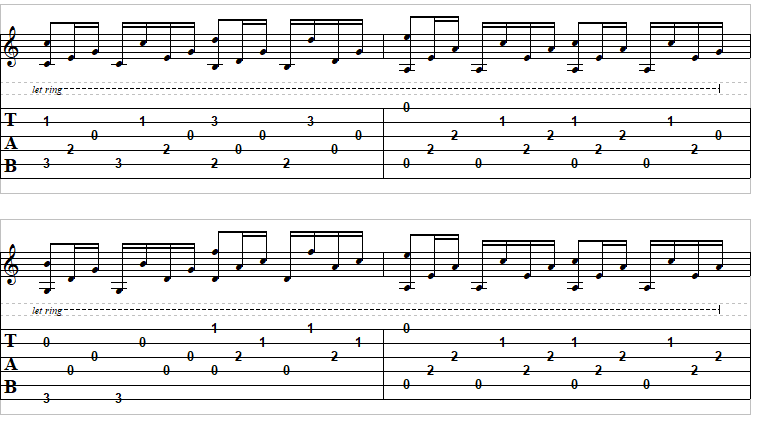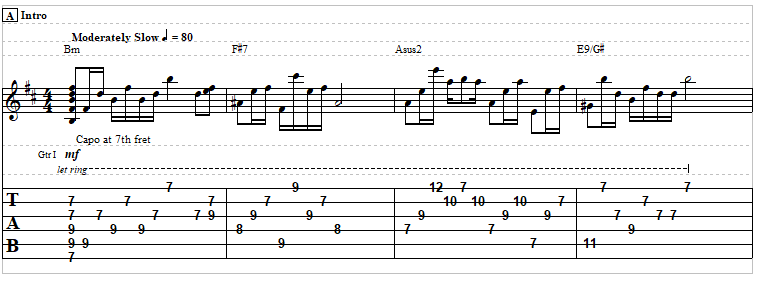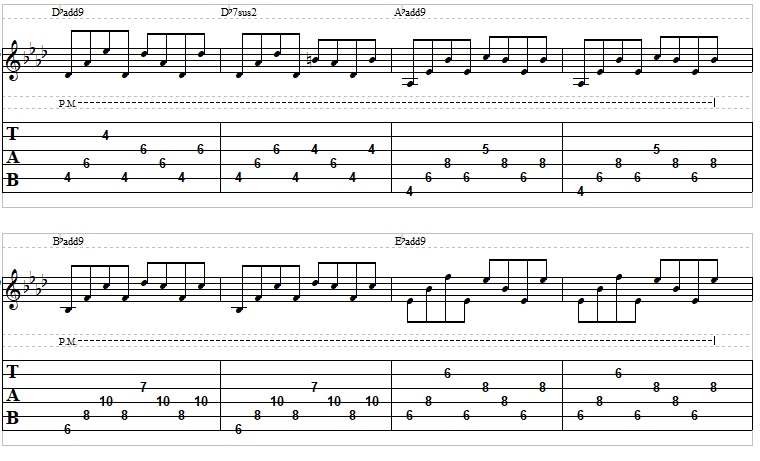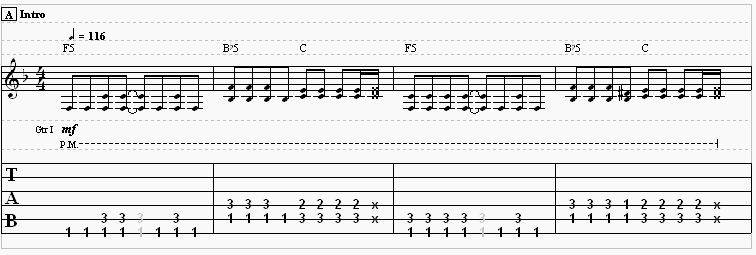
Houses Of The Holy- Led Zeppelin

Back In Black- Complete Main Riff


Hotel California- Eagles – Intro Part 1
Here’s a tough one for you. To play this like the original you’ll need a capo at the 7th fret (and a 12 string to boot). It’s fun to learn and rewarding if you can finally get it, but I ain’t gonna lie… its a tough one!

Em, B7. Dsus2
Another One Bites The Dust- Queen

Every Breath You Take 3

=)
Best Friend’s Girl – The Cars

Aqualung- Jethro Tull
Here is a cool riff from Tull that has quite a bit of technique that all guitarists need to know. The ribbon-like symbol in the first and second measure is known as “vibrato.” This is when you rapidly shake the string being played with your fret hand. There are also a few slides, which are performed by sliding your fret hand on the strings while playing at the same time.
Guitar

Riff Resources
Beat It 1

Soul Man 7
Musical Break (in the new key)

Outro
